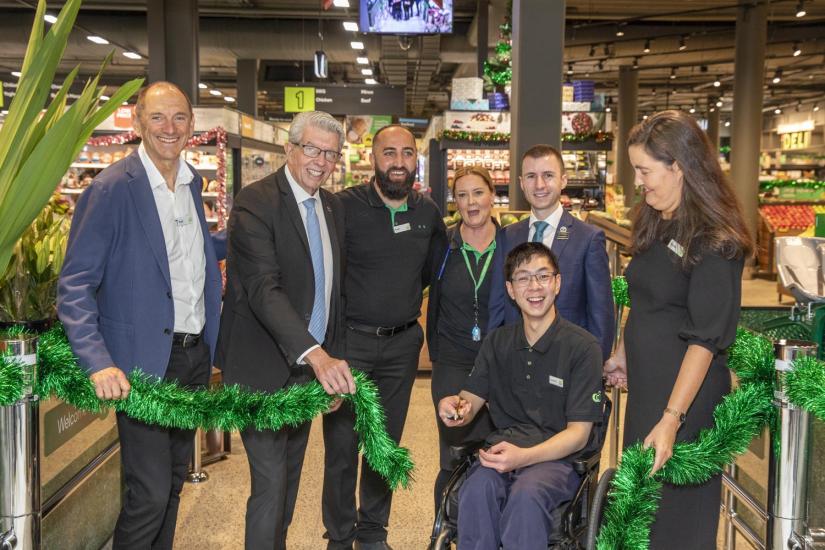For UTS student Johnson Chen, getting work experience as a wheelchair-user proved difficult. An opportunity to get involved in the development of a new wheelchair-accessible checkout not only provided him with the chance to work with real-world clients, but saw him land a part time job.
Woolworths has unveiled a new accessible checkout, designed specifically to meet the needs of team members living with a physical disability, including those who use wheelchairs and other mobility aids.
In consultation with the Centre for Inclusive Design (CfID), the supermarket giant utilised inclusive design principles to create the wheelchair accessible checkout The designs were adapted based on feedback from people with disability, to ensure it met varying needs.
Traditional checkouts pose several barriers to team members who use wheelchairs. The height and lack of space means an operator in a wheelchair cannot slide underneath the conveyor belt to scan the groceries. The new design aimed to address these issues by including features such as:
- adjustable height with space for a wheelchair to fit under the conveyor belt
- a narrower conveyor belt so team members can easily reach all groceries from a seated position
- a rotating bag transfer – once a team member has packed a customer’s bag, they simply spin the panel to rotate it towards the customer, sending it down a gentle slope to the bag collection space to avoid heaving lifting and reaching
- a pull drawer so receipt paper can easily be refilled without reaching over, while keeping the receipt dispenser close to customers.

Johnson Chen, UTS student, at the unveiling of the new accessible checkout.
Scott Sumner, Inclusive User Experience Manager at CfID, said one of the most impressive things about working on this project was Woolworth’s ambition from the start.
‘Even before we knew it was going to work, they were committed, and they remain committed. I think it is amazing to see a company take the lead in creating an inclusive society and essentially saying “we want to be the standard that others look to”.’
So how did they get to the point of unveiling? Scott said it was the culmination of three stages.
Stage one involved co-design workshops run by CfID in consultation with Woolworths, Mills Group – who designed and built the checkout – and wheelchair users from the community.
After these initial discussions, stages two and three were all about designing, building, and testing the checkout. It was at this point that Johnson Chen, UTS Computer Science student, was brought on board.
‘My accessibility consultant put me in touch with CfID, who at the time were looking for a manual wheelchair user to test the prototype,’ Johnson said.
‘After testing I gave some suggestions on what could be improved on further, and what worked. A few months later, I was invited again to test the real thing at the new Kellyville Grove Woolworths. It was really cool to see a cardboard cutout turn into a real manmade thing.’
Shortly after testing, Johnson asked Woolworths how he could apply for a job. Now the 19-year-old is working at the Kellyville Grove store in northwest Sydney, where the accessible checkout was unveiled just last week.
As a wheelchair user my job options are very limited. Working with real world clients and having these opportunities to go out of my comfort zone are very useful as it can give me more experience and opportunities to learn about the workforce.
For both Johnson and Scott, it was imperative to engage those with lived experience of disability into the design process from the get-go.
‘This design would not be at the stage it is right now if we didn’t have people with lived experience in this project. They provided excellent feedback, and shaped the design that Mills produced,’ Scott said.
‘Having had this experience, I feel very included and like I can give back to this society. I hope other wheelchair users will feel the same way too when they get this opportunity. Hopefully, this project will inspire other companies to consider how inclusive they are,’ Johnson said.
UTS is a proud partner of the Centre for Inclusive Design. Visit their website to find out more about the work they do.

